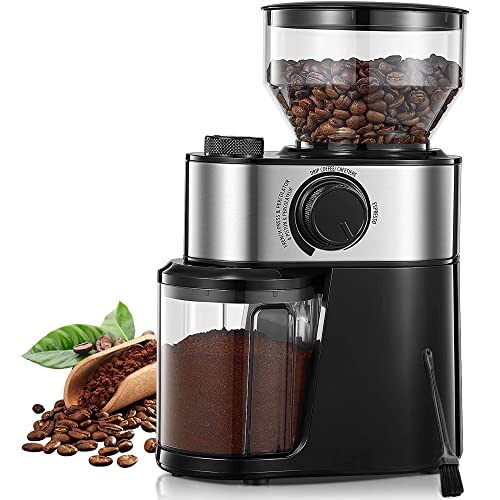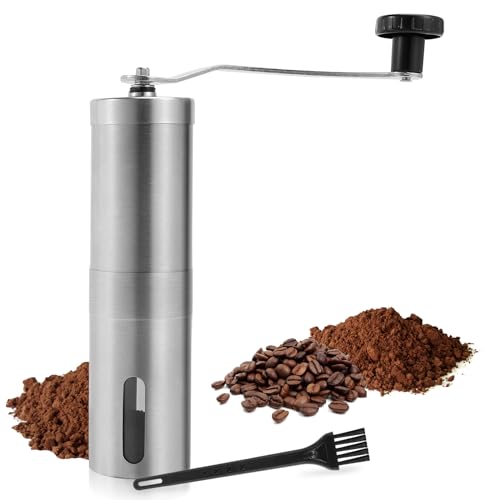9 . What Your Parents Taught You About Coffee Beans And Grinder
페이지 정보

본문
 Coffee Beans and grinders organic coffee beans
Coffee Beans and grinders organic coffee beansA delicious cup of coffee begins with freshly ground beans. The proper grind size for your method of brewing will ensure optimal extraction of flavors and aromas.
The Opus grinder comes with 41 grind settings including volumetric dosing, as well as a spouted catcher to minimize mess. It also includes a tamper which prevents the blades from wearing out too quickly.
Pin that Rolls Pin
Since centuries, the rolling pin has been an indispensable tool in kitchens across the world. This versatile tool is used to prepare a variety of food items, including bean. Rolling pins come in a variety of sizes and styles. Some are made of stainless steel coffee grinder electric, while others are made of wood. There are models specifically designed to perform specific tasks, like pastry making. Select a rolling-pin that's simple to operate and can fit in your kitchen. Consult a knowledgeable shopkeeper for assistance if you are not sure of the model to buy.
The roller pin method could be a great alternative to grinding beans in blenders or food processors. It's more labor intensive, but it's effective at making a medium-fine grind that works well for drip coffee and French press. It can be adjusted to create an even finer grind if needed.
This method is messy, so cover your work surface with tin or another protection surface. Spread the beans in a single, flat layer on a flat surface such as a cuttingboard. You can roll the beans around using a rolling-pin and apply equal pressure to all parts. Then, repeat the process until the beans have been crushed to a fine grind.
If you're not comfortable rolling pins then you could try using hammers instead. This technique can be very noisy, and may take longer to get the desired coarse grind. However, it can be more effective in cutting the beans into smaller pieces, and will be less harmful to kitchen equipment.
You can also use a pestle and mortar to grind beans. This method is more difficult to master but will yield better results. This method is best suited to those who require fine grounds for the French press or chemex coffee. It is essential to test the consistency of your ground beans regularly to ensure you're not over-grinding them. This can result in bitter coffee or clog up your coffee maker.
Bag
A electric coffee bean grinder bag is a form of packaging that is used to transport and store whole beans or ground beans. It is a bag that is flexible and has side gussets, which makes it easier to grasp, seal, and can be made from cotton, paper or plastic. Some bags are insulated to guard the beans from moisture and to retain heat, which enhances the flavor. Some bags also have a degassing vent, which allows carbon dioxide to escape while keeping oxygen.
Choosing the right type of bag can be tricky since each type of bag has its own advantages and drawbacks. Paper bags are light and recyclable. They are an eco-friendly choice. However, it can absorb odors and moisture and may be brittle after a while. Cotton or jute are better alternatives if you are looking for a bag that will last longer. They are also more resistant to stains and tears.
When picking a bag to buy take into consideration its reputation and recommendations. You can check out online reviews and ask for suggestions from local coffee lovers and your local coffee shop. In the end, it's best burr grinder to test and taste various options to determine the best fit for your tastes.
It's not just about the size or shape of the particles when grinding coffee beans; it's about their consistency and shape, too. Different shapes and sizes of the particles influence how water moves through the coffee, which ultimately determines the rate of extraction and flavor. Finely-ground particles can lead to excessive extraction and bitter notes, while coarser particles might not extract enough flavor (under extraction).
While some brands suggest grinding beans before making a batch, it's recommended to grind them right before you use them. Grinding too long in advance could cause the beans to become oxidized, which can affect their flavor. It is also important to use a freshly cleaned grinder, since coffee oils can build up over time.
You can also use a mortar and pestle to grind your beans. This classic culinary tool is easy to use and gives you more control than blenders. It is essential not to over-grind the beans because this could damage the seeds and change the flavor.
Hammer
There are several methods to grind beans by hand if you don't have a grinder. Some methods require more time and effort than others, but all can work well with the proper tools and grit. You can grind your beans with an hammer, rolling-pin or even a meat tenderizer. Make sure you safeguard your countertops and avoid making too much of a force because it could damage the beans or even damage the hammer or the rolling pin.
You can alter the quality of your ground coffee when you grind the beans yourself. You can grind your coffee fine or coarse, depending on what you prefer and how you prepare your coffee. It is crucial to find the right texture for coffee, since it affects the way that water flows through the grind and also extracts aromas and flavors.
Whole beans contain aromatic compounds and volatile oils that give coffee its distinctive scents and flavors. When you grind coffee, these components are exposed to air and may be extracted from the water when you brew. The size of the grind is also crucial, as it influences how water interacts and brews with coffee beans. A grind that is too fine can result in over-extraction and bitterness and a too coarse grind may result in bitter or unappealing tasting coffee that is weak or unpleasant tasting.
The first step in this process is to measure the desired amount of coffee beans you wish to grind. Place the coffee beans in a resealable bag or between parchment paper. Lay the bag flat on the hard surface, and then use a rolling-pin to crush the beans. This method is effective and can produce a good, coarse grind. Be careful not to overdo it, as too much pressure can damage the bag and ruin your coffee.
This is a messy technique that requires the use of grit. Place beans in a Ziplock bag or between parchment papers to prevent them from flying around. Press the hammer lightly on the bag, instead of hitting it like a hammer. This will ensure that you don't hurt the countertop or the hammer, and you'll be able maintain a consistent level of consistency.
Paper Filter
Paper filters separate ground coffee from the liquid brewed and offer a fresh sparkling cup of coffee with no any dregs. They are simple to use and can be thrown away with manual brewers. Paper filters are also compostable and biodegradable which makes them a good choice for environmentally conscious households. After brewing they are easy to clean and don't require washing, unlike metal filters. Paper filters should be used with care. A mistake could result in a cup that has rough texture or a bitter taste due to over-extraction.
Paper filters are absorbing and absorb the majority of natural oils that Coffee Beans And blade grinder (Https://Fleshshovel79.Bravejournal.Net/) beans produce. This results in cups that are less oily, and has a blander taste. However, this also prevents some of the aroma and flavor compounds from reaching the final coffee. Some of these oils, like cafestol and kahweol are known to raise cholesterol levels therefore avoiding them might be beneficial for some people.
Paper filters are made by washing wood pulp and converting it into thin sheets. The sheets are then cut in different shapes including half-moons which are placed into coffee filter holders. The filters are usually bleached to create an appearance of white, however certain companies, such as Melitta offer them without bleaching. Unbleached filters are an excellent alternative for those who are concerned about their health. Bleached paper can leak dioxins, which could be harmful to your coffee.
 Filters are available in various sizes to accommodate a range of coffee maker models. Some filters have large holes, while others have smaller ones. The size of the hole determines what kind of grind is best for it. Large holes are best for coarse grinds, whereas smaller holes work best with medium-sized particles. The size of the filter could also impact the flavor of your coffee, since certain filters can transfer foreign flavors or over-extract and block the grounds. A high-end filter made to limit this will produce an excellent cup of coffee.
Filters are available in various sizes to accommodate a range of coffee maker models. Some filters have large holes, while others have smaller ones. The size of the hole determines what kind of grind is best for it. Large holes are best for coarse grinds, whereas smaller holes work best with medium-sized particles. The size of the filter could also impact the flavor of your coffee, since certain filters can transfer foreign flavors or over-extract and block the grounds. A high-end filter made to limit this will produce an excellent cup of coffee.- 이전글How To Create An Awesome Instagram Video About Car Key Cutting And Programming 24.10.20
- 다음글15 Top Mens Sex Toys Bloggers You Need To Follow 24.10.20
댓글목록
등록된 댓글이 없습니다.


